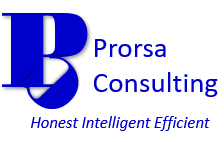Practical EHS Management System Basics & Tips to Get You Out of the Gate
By : Admin -

In a previous post, we covered the differences between Environmental, Health, and Safety (EHS) programs and EHS Management Systems. Programs offer the traditional EHS management choice for organizations. An EHS management system serves as the evolved cousin to traditional programs.
Correspondingly, EHS management systems have continued to gain popularity as organizations and the ways we conduct business have matured. Management systems give structured processes to manage EHS risk, improve performance, and also aid in reducing costs.
In this post, we will take a deeper dive into EHS management system basics. We’ll examine the Plan-Do-Check-Act (PDCA) model, discuss the benefits, and cover some items to consider before deciding on the management system approach.
Background on the PDCA Model
Most EHS professionals have heard of the PDCA Model. Similarly, we know it offers a simple roadmap for even the most complex of management systems. While we will discuss in more detail below each element of the PDCA model, a little background information on its origins may be useful.
Walter A. Shewhart originally developed the groundwork for the PDCA model during the early 20th century. However, the PDCA model was updated from Shewhart’s original cycle and popularized by W. Edwards Deming during the 1950s. The PDCA model generally follows the principles of the scientific method (Observe, Research, Hypothesize, Test, Record, Conclude, & Replicate), which has been used by scientists since the 17th century.
Benefits of EHS Management Systems
Organizations implement management systems to reap the benefits. ISO 14001 Key Benefits shares several of the rewards to be gained through the use of a management system:
- Demonstrate compliance with current and future statutory and regulatory requirements
- Increase leadership involvement and engagement of employees
- Improved company reputation and the confidence of stakeholders through strategic communication
- Achieve strategic business aims by incorporating environmental issues into business management
- Provide a competitive and financial advantage through improved efficiencies and reduced costs
- Encourage better environmental performance of suppliers by integrating them into the organization’s business systems
While the above list refers to environmental management, the listed rewards would hold true for a standalone safety management system or integrated EHS management systems.
As we continue our PDCA discussion, please note I have continued to utilize ISO 14001:2015 (Environmental Management) as a guide for listed potential activities for each PDCA model element. Nevertheless, the current OHSAS 18001:2007 and upcoming ISO 45001 models addressing Occupational Health and Safety Management largely align with the examples provided.
By Rawpixel.com on Unsplash.
EHS Management System: Plan
The Plan stage of the PDCA model reviews the current situation and helps organizations decide on what actions to implement. Likewise, the actions chosen must align to the selected management system requirements.
Activities organizations may undertake during the Plan stage include the following:
- Gaining insight into the context of the organization
- Scoping the system
- Affirming the organization’s commitment to the management system
- Defining leadership & commitment
- Developing a policy statement
- Assigning roles, responsibilities, and authorities
- Determining and assessing risks and opportunities
- Defining and distributing resources
- Establishing strategies to facilitate adequate competence, awareness, and communication
- Creating a framework to manage documented information
EHS Management System: Do
Now that initial review and planning has allowed identification of what needs to be done, it’s time to develop the means to do it and implement. This all happens in the Do stage of the PDCA model.
The below list outlines potential items completed in the Do stage:
- Developing and using procedures and work instructions aimed at addressing identified risks and opportunities
- Establishing and implementing processes to handle potential emergencies
EHS Management System: Check
With the planning completed and the doing in full swing, the time has come to run a test on the health of the management system. Furthermore, the Check stage of the PDCA model addresses this area.
The following activities would possibly fall into an organization’s Check stage:
- Conducting monitoring and measurement of EHS activities
- Auditing against legal obligations
- Assessing and evaluating performance
- Performing an internal audit of the management system
- Conducting a management review
EHS Management System: Act
The Act stage of the PDCA model encompasses making the necessary adjustments to address improvement opportunities found during the Check stage. In addition, this stage drives the ongoing evolution and long-term enhancement of the management system.
Companies may choose to perform these items as part of the Act stage:
- Developing and implementing corrective and preventative actions
- Putting added processes in place to drive continuous improvement of the overall management system
Is Your Organization Considering an EHS Management System?
You’ll notice I framed the activities listed below each PDCA model element as suggestions. I have a reason for this . . . management systems are strictly voluntary. Thus, each organization must assess its needs, goals, resources, and culture to make an informed decision on how to manage EHS.
Companies may opt for the full management system approach or a hybrid, where only a part of the system elements are incorporated. Moreover, an organization may choose a consensus standard like ISO 14001 or ISO 45001 to serve as its system requirements guideline. Notwithstanding, another organization may set its own management system requirements.
Furthermore, an organization can decide to have its system certified by a third party or agree to run the management system without certification. Any of these options are perfectly acceptable.

By Tim Marshall on Unsplash.
To Implement or Not? . . . What Should We Consider?
Companies should consider all available information before making any decision on an EHS management system implementation. Therefore, the following questions may serve as food for thought when trying to arrive at a decision to implement or not:
- What are our business goals, and how does EHS fit into those goals?
- Do we have EHS performance goals beyond simple regulatory compliance?
- Are our target customers requiring an EHS management system?
- Are we looking for ways to realize cost reductions in the future?
- Would our existing organizational culture support an EHS management system implementation?
- Do we have other business functions already using the management system approach that we can leverage?
- Can we find the resources to implement? Does it make business sense to reallocate these resources?
Tips to Get You Started with an EHS Management System
If you think moving into a full or hybrid management system is a possibility, you may be feeling a little overwhelmed at this point. But, you don’t have to be! You can hold the key to success by being proactive before the process takes on a life of its own.
Check out my list of simple tips below to get your EHS management system journey pointed in the right direction.
- Get senior leadership buy-in before you start and facilitate on-going leadership commitment throughout the process
- Complete a gap analysis between your existing program or system and the management system standard you want to follow. Consequently, the assessment will help to identify the existing EHS areas needing attention.
- Decide on a strategy to capture documented information early in the process. This action will make it easier to incorporate the documents and records you create during the implementation into the management system.
- Also, do your research and familiarize yourself with the chosen standard/guideline requirements for the management system.
- Engage outside experts from the start, as needed.
In conclusion, management systems are still the robust go to for organizations seeking increased EHS performance, proactive management of risk, and a process to aid in reducing costs. Additionally, the PDCA model serves as a footprint for even the most complex EHS management systems.
Organizations have diverse options to manage EHS risk. Moreover, management systems have the flexibility to meet organizational needs regardless of size or scope.
Want More?
Want to delve further into the world of EHS management systems? Explore the links below for information on some popular standards and guidelines.
- Achieving Environmental Focus with ISO 14001:2015
- ISO 45001 – Occupational Health & Safety (under development)
- OHSAS 18001 – Occupational Health & Safety Management (to be replaced with ISO 45001)
- CORESAFETY (mining safety)
- OSHA Voluntary Protection Program: Policies & Procedures Manual
- ANSI Z10 (OSHA Overview) – Occupational Health & Safety Management
- OSHA Recommended Practices for Safety and Health Programs
Other EHS Management System Topics You May Like
Simple Ways to Dip Your Toe into Environmental Sustainability in Business Today
Think You Know How to Execute an Effective EHS Management System Implementation Plan Stage?
Info on the EHS Management System Do Stage You Can’t Ignore
The Subtle Art of an EHS Management System Check Stage
EHS Management System Act Stage Info to Seal the Deal
Prorsa Consulting works with regulated businesses to assess, maintain, and enhance their environmental and safety compliance. Check out our Services page for more information.
Your feedback on this blog’s content is always encouraged. If you found this information useful, be sure to like and/or share below! You can also give your feedback via our Contact Us page.
Correspondingly, you can follow Prorsa Consulting on LinkedIn, Pinterest, and Twitter for regular content updates.
